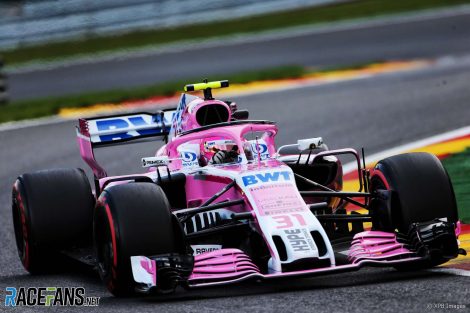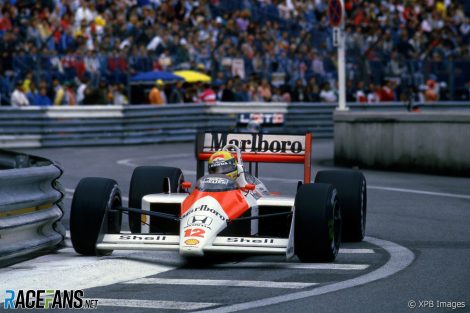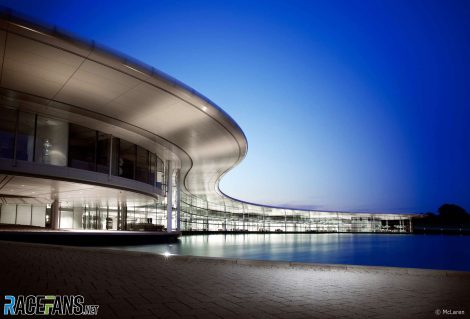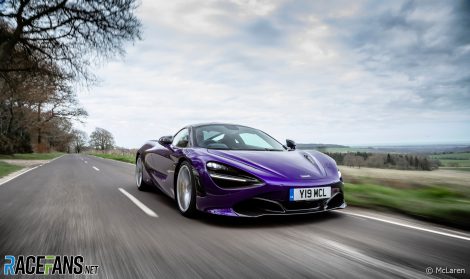Sunday was a time for celebrations if you were clad in orange: with first and second places in the constructors championship long beyond doubt, the focus in Abu Dhabi was on the tight fight for third between Racing Point, Renault and McLaren. With an estimated $4 million per place at risk – the final figures will be circulated to teams in March – the difference between third and fifth could be as much as $8m.
Thus, bubbly stuff flowed merrily at McLaren as folk wound down after the most hectic six months in F1 history, while Racing Point – a mere seven points or 3.5% adrift – retired to lick their wounds after Sergio Perez’s failed Mercedes power unit robbed the pink team of vital points. The Middle Eastern trio of races proved a rollercoaster run for Renault, with the yellow-blacks finishing 15 points short of Racing Point.However, welcome as it is, an additional $8m pales into relative insignificance against the windfall £185m ($240m) McLaren stands to gain over the next two years after clinching a deal to sell up to a third of the race team to a syndicate comprising MSP Sports Capital, a Californian investor in sporting properties, Najafi Investments and UBS O’Connor, a subsidiary of the Swiss investment banking giant (and a former F1 sponsor).
MSP is headed by Jeff Moorad, a veteran sports agent and former co-owner of the NASCAR Hall of Fame Racing team – which is when and how he originally met McLaren Racing CEO Zak Brown, then sponsorship seller par excellence – and had expressed interest in acquiring Force India (now Racing Point) during its 2018 administration process, then Williams when the team was put up for sale earlier this year.

The Williams interest is thought to have been more cursory, and Moorad admits it was a “less serious interest”, adding, “Once our discussions began in earnest with Paul [Walsh, McLaren chairman], and Zak, we didn’t look back. [McLaren] was the team that we were interested in; if there was a path to create a relationship and a partnership with McLaren, by far, it was our first choice. So, we’re quite pleased.”
Until the early nineties McLaren had primarily been a race team. Founded by F1 driver Bruce McLaren and, after the racer’s untimely 1970 death during CanAm testing, subsequently operated by Teddy Mayer, the team scored titles via Emerson Fittipaldi (1974) and James Hunt (1976), then ran out of steam. Team sponsor Marlboro massaged a merger with Project Four, a nascent F1 team planned by Ron Dennis, who eased Mayer out.
Under Dennis the team was phenomenally successful, serially winning drivers and constructors titles via TAG-Porsche and Honda. Dennis decided to produce a (BMW-powered) limited-edition F1 supercar which swept all before it, including the Le Mans 24 Hour classic, despite being in the throes of switching the F1 team to Mercedes power. Success continued – as Mika Hakkinen’s back-to-back titles attest – in turn persuading Mercedes to acquire 40% of McLaren.
Advert | Become a RaceFans supporter and
Then hubris set in: First Dennis and partner Mansour Ojjeh (of TAG fame) sold shares to the Bahraini investment fund Mumtalakat, infuriating Mercedes who thought they had first dibs. McLaren was found guilty of using Ferrari data in the infamous 2007 ‘Spygate’ scandal and fined $100m, which further incensed Mercedes, as its brand was indirectly implicated, and the company effectively covered 40% of the fine.

Although Lewis Hamilton (narrowly) won the 2008 championship, Mercedes exited McLaren and acquired Brawn, which won both 2009 titles as a customer engine team and was on the market. From there matters went downhill – fast – with Mercedes pulling its support at the end of 2013, reducing McLaren to a customer team. It trod water until 2015, when Honda returned. The reunion was, frankly, a disaster. Money haemorrhaged.
Dennis yo-yoed across McLaren’s structures, in 2009 stepping down as F1 team boss and handing control of the team to Martin Whitmarsh, ostensibly to lead the automotive division. But the timing coincided with the aftermaths of ‘Spygate’ and ‘Liegate’ – the latter over hushed radio messages to Hamilton in Melbourne – and he ousted Whitmarsh in 2013, then received the same treatment himself in 2016 from shareholders after litigation.
Tellingly, Dennis and Ojjeh fell out, then Dennis and the Bahrainis fell out. The structures of various entities ostensibly making up an informal conglomerate – at one stage comprising automotive, racing, advanced technologies, aviation and catering – were a mired in confusion: Each company was a separate entity with unique shareholder structures, making for complex management and convoluted control.

This (compressed) historical timeline illustrates how and why McLaren went from regular championship contender – F1’s second-oldest team remains the sport’s second-most successful, slotting in behind only Ferrari – to an also-ran in dire danger of collapse.
The Bahrainis proceeded to consolidate the various shareholdings under a single entity (McLaren Group), disposing of unrelated entities in order to focus on automotive, racing and advanced technologies, then raised a £525m bond in the City.
The next step was a slew of high-level appointments, including that of Brown as CEO of McLaren Racing and Walsh, formerly CEO of drink maker Diageo, as executive chairman. The latter had once been punted as Bernie Ecclestone’s replacement and was no stranger to F1, connected as was through Diageo’s Johnnie Walker sponsorship and run-ins with Force India owner and liquor baron Vijay Mallya via their mutual Indian interests.
Advert | Become a RaceFans supporter and
Brown totally restructured the racing division, dumping Honda and signing Renault as interim power unit supplier while eyeing the big fish: Mercedes power from 2021. The result: sixth in 2018 then fourth and third this season.

The crucial point is that McLaren is now an automotive company with a race team and advanced technology division attached rather than a championship-winning operation dabbling in 30 supercars per annum and flogging obsolete F1 technologies to other industries as it had been a decade ago – plus it now needs to service several mountains of considerable debt.
The Automotive division needs to deliver profits first and foremost to fund future products. Never was R&D more crucial than during this transition to electrification and alternate energies, and more so for supercar makers who don’t know whether their products will be legal come 2030. Add in that McLaren’s volumes – half of those of Lamborghini and Ferrari – mean overheads and R&D are spread over a smaller base.
Race teams, though, need regular investment streams to upgrade facilities in order to deliver faster products. For teams the objective is to create value via an expanding asset base, rather than to invest in product. Production car paint shops are good for 10 years with slight upgrades; F1 is all about the latest and best technologies and simulations tools – these cost money, and had been largely neglected at McLaren.

“This cash flow goes to Racing,” he said. “I think it’s important that Racing has the runway, knowledge and security to invest, so they can win. That’s what this fundamentally puts in place. We’ve got a number of activities in place where we will look to refinance some of our debt next year. Attendant with that could be some kind of equity raise. This particular transaction does not impact the debt level of McLaren [Group] directly.”
However, Walsh believes that, “McLaren already had a fragile business model, because fundamentally, the cash flow from automotive was then deployed into racing,
“Equally, the return objectives and success criteria are different. The automotive division requires cash flow, earnings per share, etc… A racing team is much more about capital appreciation, and therefore you have two fundamentally different drivers. [But] there is no question the pandemic had taken any vulnerability and magnified it. Therefore, we had a high degree of urgency to get this done.”
“We stopped making cars because our factory was locked down; if you don’t make cars, you don’t sell them, [so] you don’t get the cash flow. Equally, we had our racing team continuing to spend money, as they should. That tension made everyone acutely aware that the fundamental model needed adjustment.
“Now, we could have just trimmed ourselves. And we could have just dialled Zak back on the money that he could spend. But then we would also have had to be true to ourselves, we would have been dialling back on our ambitions. And we didn’t like that.”
With the partnership in place and funding rolling in, how quickly can McLaren get its capital expenditure projects – such as its new wind tunnel – back on track?
“We can only manufacturer and build as quickly as humanly possible,” said Brown. “What I can say is all of our ‘capex’ projects are turned back on. We would like to try and make up for time lost this last six months, but building a wind tunnel takes years. Driver simulators take less time, but nonetheless do take 12 to 18 months.
“Andreas (team principal, Seidl) knows he has my support, also our shareholders’ support, to do everything we can to move as quickly as possible with the resources we have. Time will tell whether we’re able to accelerate anything that is ultimately out of our control when it comes to manufacturing.”
The leaseback, though, remains unaffected – Walsh explained that the company intends remaining “in Woking in that fabulous [MTC], but a sale and leaseback is just more efficient use of capital, and therefore it makes perfect sense to do that,” adding, “Throughout my career I operated out of very nice offices around the world, and [the companies] never owned any of them.”

McLaren could have listed on the stock exchange, as Ferrari and Williams did, but just look where it got them. Or sold out to a car company, as Sauber did to BMW – ditto. Or once again slid down the order to ninth or worse, as it surely would have without investment. Equally, the shareholders could have relegated Racing to the nether regions of the MTC, feeding it scraps from the Automotive table.
Instead, this investment by the MSP consortium provides dedicated capital to expand the operation at a crucial point in F1 and McLaren’s history without unduly diluting control, all while opening further doors to North American markets. On that basis it was not only the right thing to do for Walsh and Brown, but, frankly, the only thing.
Join the RaceFans Supporters Drive!
 If you've enjoyed RaceFans' motor sport coverage during 2020, please take a moment to find out more about our Supporter Drive.
If you've enjoyed RaceFans' motor sport coverage during 2020, please take a moment to find out more about our Supporter Drive.
We're aiming to welcome 3,000 new Supporters to help fund RaceFans so we can continue to produce quality, original, independent motorsport coverage. Here's what we're asking for and why - and how you can sign up:
RacingLines
- The year of sprints, ‘the show’ – and rising stock: A political review of the 2021 F1 season
- The problems of perception the FIA must address after the Abu Dhabi row
- Why the budget cap could be F1’s next battleground between Mercedes and Red Bull
- Todt defied expectations as president – now he plans to “disappear” from FIA
- Sir Frank Williams: A personal appreciation of a true racer





bosyber (@bosyber)
16th December 2020, 12:16
Well written comprehensive view of where McLaren seem to stand, and history of how they got there, which places things in context and makes it easier to appreciate the recent moves and how they are revelant for the motorsport/F1 activities we here car about most, thanks @dieterrencken for another one of your great Wednesday columns.
bosyber (@bosyber)
16th December 2020, 12:16
lol, car. Meant care about, but sort of fits?
Jimmi Cynic (@jimmi-cynic)
16th December 2020, 20:39
Quite car-rect, @bosyber ;-)
GeeMac (@geemac)
16th December 2020, 12:19
There are some people in Grove who would point out that Williams are the second most successful team in terms of Constructors Championships. McLaren are obviously a clear second in terms of race wins though so the statement is accurate from that point of view.
Dieter Rencken (@dieterrencken)
16th December 2020, 12:37
In terms of total world championships won McLaren sits on 20; Williams on 16.
anon
16th December 2020, 21:55
@geemac the argument that Dieter is putting forward is in terms of combined World Drivers Championships and World Constructors Championships.
You are correct that, in terms of World Constructors Championships, Williams, on 9, leads McLaren, which has 8, WCC victories to their name, although the 11 World Drivers Championships that McLaren drivers have won does outstrip the 7 that drivers for Williams have won. As you note, in terms of races won, the stats are definitely in McLaren’s favour.
Balue (@balue)
16th December 2020, 12:20
Good stuff
Jere (@jerejj)
16th December 2020, 13:21
I like the top image.
Eric Rocheteau
16th December 2020, 14:47
Thank you for the in-depth article.
However Paul Walsh was named Executive Chairman of McLaren Group in March 2020, so did not participate in the prior restructuring of McLaren Racing that Zak Brown instigated.
I also note that Paul Walsh mentioned earnings per share as a key indicator for McLaren Automotive, this is a hint that the intention is to take Mclaren Automotive public at some point
BasCB (@bascb)
16th December 2020, 15:46
I really think that if they can get on with this path – building cars and interesting solutions and then going racing – especially if the racing includes F1, Indycar and sportscar racing (do they make money operating / prepping cars for customer teams?) – they have quite a decent and interesting gig going for them.
Frasier (@frasier)
16th December 2020, 17:41
Look no further than Seidl for the impetus behind this years resurgence. Everything flows from down from the leader’s vision, experience and confidence. Williams, last won under Toto Wolff, same thing.
Phil
16th December 2020, 17:42
Ferrari will be back. Alonso will push Renault forward (or break it trying). The Pink Mercedes will be strong again. Congrats to them but I also think there was some luck involved in getting Mclaren to third this year. Would love to see another step next year but it go in either direction just based purely on other teams progress.
Antonio Mineiro
16th December 2020, 18:09
All agreeable, except the “luck” part IMO. McLaren had too many DNFs this season that actually hurted alot the points.
Jay Menon (@jaymenon10)
17th December 2020, 0:18
Yep. I think next season will be very good. Still believe Mercedes will be far ahead, so the title is a foregone conclusion, but all we can hope is that Red Bull up their game and are closer. This may push Merc to the limit, inducing some mistakes from time to time.
The fight for third is going to be mega. In fact, the fight for second may be mega, who knows?
Whatever the case, we will probably see Mclaren, Renault, RP and Ferrari being very very close.
Antonio Mineiro
16th December 2020, 18:06
Wow… Thanks for this. As a huge Mclaren fan for the last 43 years, this was excellent reading. Hope with Merc engines things get better. Thanks again.
jhg103 (@joshgeake)
16th December 2020, 20:58
Having watched F1 for 25 years I find McLaren strange – if it weren’t for the name id struggle to say they’re the same team as they were 10 years ago.
The owners, management, team personnel, drivers, sponsors and colour scheme are different.
How times change.
Dave (@davewillisporter)
16th December 2020, 22:27
@joshgeake McLaren are McLaren. Started with Bruce, Ron took it to the next level. Zak adapted it to modern day sponsor reality. In a couple of years when their wind tunnel is up and running I fully expect them to run at the front. Mercedes might be the benchmark in how to run an F1 team and are one of my favourites because of that but I’ve never written off McLaren.
eljueta (@eljueta)
17th December 2020, 6:34
Can some reader well versed in finance explain what this actually means?
Dieter Rencken (@dieterrencken)
17th December 2020, 7:26
This from the article:
The Automotive division needs to deliver profits first and foremost to fund future products. Never was R&D more crucial than during this transition to electrification and alternate energies, and more so for supercar makers who don’t know whether their products will be legal come 2030. Add in that McLaren’s volumes – half of those of Lamborghini and Ferrari – mean overheads and R&D are spread over a smaller base.
Race teams, though, need regular investment streams to upgrade facilities in order to deliver faster products. For teams the objective is to create value via an expanding asset base, rather than to invest in product. Production car paint shops are good for 10 years with slight upgrades; F1 is all about the latest and best technologies and simulations tools – these cost money, and had been largely neglected at McLaren.
Dave
26th December 2020, 12:21
Like a Champions League victory.